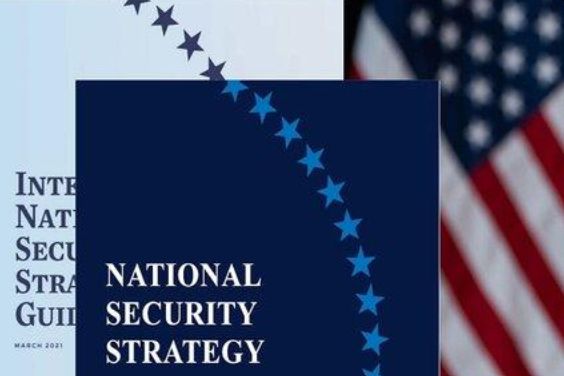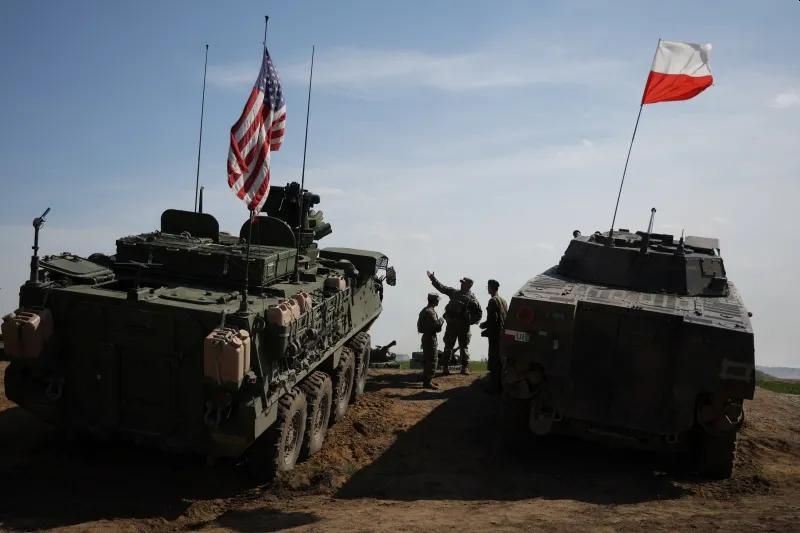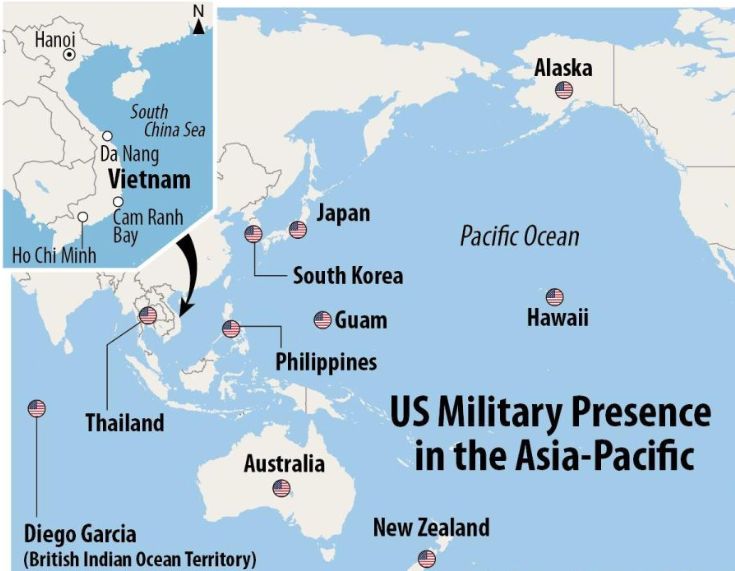By Eric Vandenbroeck
and co-workers
Ukraine And U.S. National Security
The war in Ukraine
has sparked a puzzling development in U.S. national security thinking. At the same
time as U.S.-European cooperation has surged, an influential group of American
scholars, analysts, and commentators have begun pressing the United States to
prepare to scale back its commitment to Europe radically. The basic idea is not
new: restraint-oriented realists have long called
for the United States to rethink its security posture in Europe.
However, they have
been joined by an influential band of China hawks, who argue that the United
States must curb its European commitments. The primary contest, this group
believes, is in the Indo-Pacific, against China—and
Washington must focus all its resources on that confrontation.
The specific wishes
of these realists and hawks are often vague, combining ill-defined cuts to U.S.
forces in Europe with demands for Europe to step up its security without
necessarily calling on Washington to ditch NATO outright. But if the United
States is to reduce its obligations to NATO, to go all-in on the China threat,
as they argue it should, it will have to slash its forces in Europe and at
least raise the possibility of pulling away from the alliance.

On a conceptual
level, this idea is bold and thought-provoking. In theory, Washington can
significantly bolster its Indo-Pacific posture by empowering allies to take the
lead in Europe and liberating U.S. resources for use in Asia. But a closer look
at the dynamics in the play shows how self-defeating such a shift would be in
practice. Instead of strengthening Washington’s hand in Asia, the result could
weaken the United States' growing competition with China.
Apples And Oranges
To begin with, the
tradeoff between Europe and the Indo-Pacific is less significant than some
skeptics suggest. The military needs of the two regions are quite different.
Because of its vast distances and maritime orientation, the Indo-Pacific
primarily requires ships and airplanes, not ground forces of the sort that
Europe needs. Both theaters place demands on standard capabilities, including
air and missile defense and advanced munitions. Still, the Defense Department is
buying more, and allies can help in these areas.
The long-standing
charge that the United States needlessly lavishes resources on Europe is also
mistaken. In 2018, for example, one estimate of the total cost of U.S.
contributions to NATO budgets, U.S. forces in Europe, European Deterrence
Initiative programs, and security assistance came to about $36 billion, less
than six percent of the U.S. defense budget that year. With the Biden
administration’s decision to deploy roughly 20,000 additional troops to Europe
after February 2022, that bill has grown, but only temporarily. The 2024
defense budget is $842 billion, of which the United States European commitments
represent only a tiny fraction.
Advocates of
disengagement from Europe often ignore an uncomfortable fact. The only way to
save significantly on European commitments would be for the United States to
take the most extreme and risky step of leaving NATO—a step few, if any, of the
Europe critics recommend. It would, however, be necessary: no other measure
would lead to significant reductions. If, for example, the United States were
to seek merely to reduce its presence in Europe but stay in NATO, it would
still need to maintain sufficient forces and capabilities to fulfill its NATO
obligations. The U.S. defense bill would not shrink by much.
Polish and American tanks near Orzysz,
Poland, May 2023

U.S. interests
preclude any complete separation from Europe. Consider what would happen if the
United States were to leave NATO to focus on the Indo-Pacific, and then Russia
decided to attack one of the Baltic countries or Poland. It is inconceivable
that a U.S. president could sit by and do nothing as Europe fought for its life
against a brutal autocrat. Such inaction would be particularly implausible if
Russia got significant help from China, the power the United States had pivoted
to challenge. If a European war will almost certainly draw in the United
States, then the best way to avoid massive costs and risk is not to penny-pinch
on peacetime commitments. The most cost-effective option is to stay, strengthen
existing alliances, and keep war from happening in the first place. Moreover,
the growing partnership between Russia and China means that Europe and the
Indo-Pacific are now inextricably linked. However much the United States may
wish to prioritize one region over the other, backing off from Europe will
empower Russia, China’s primary partner, and ally, even as it feeds Beijing’s
narratives about U.S. decline and the triumph of autocracy.
The proposal to move
troops from Europe to reinforce the Indo-Pacific misreads the requirements for
deterrence. China is most likely to attack Taiwan if it becomes desperate,
believing it will lose any hope of unification if it fails to act. Beijing is
unlikely to be deterred by modest additional capabilities shifted from Europe
at such a moment. Indeed, such a redeployment could quickly spark Chinese
escalation by signaling the beginning of a more determined phase of U.S.
efforts to “contain” China. In other words, the dramatic demonstration of U.S.
disengagement from Europe to reinforce its Indo-Pacific military presence could
induce war rather than deter it.

Membership Has Its Privileges
The United States
also derives various benefits from NATO membership that contribute directly to
its global military effectiveness, including in the Indo-Pacific. Washington’s
cooperation with European allies in areas including coordinated ballistic
missile defense operations enhances capabilities that the United States can use
to address threats beyond Europe. U.S. participation in NATO exercises—for
example, training in Arctic areas with Finnish and Norwegian troops or
practicing amphibious operations with Sweden—improves U.S. forces’ skills.
NATO’s vigorous response to threats, including disinformation campaigns, has
generated insights that inform U.S. and partner responses elsewhere through
intelligence sharing, joint planning and exercises, and combined analysis. NATO
allies are also developing capabilities for joint intelligence and targeting in
a shared battle space, likely to offer critical lessons for similar initiatives
in the Indo-Pacific. Finally, NATO has begun work on combating cyberwarfare,
announcing a Comprehensive Cyber Defense Policy, forming Cyber Rapid Reaction
teams, and building a Cyber Defense Center of Excellence in Estonia, to share
intelligence, develop standard plans and norms for cyber defense, and engage in
shared training and exercises.
The advantages that
NATO offers Washington are not confined to Europe. Indeed, it is increasingly
evident that the United States would call on NATO for assistance in the event
of a clash in the Indo-Pacific. Although it has often been assumed that the
alliance would be a bystander to wars elsewhere, a major conflict with
China will challenge those assumptions. As described by defense experts
including Jeffrey
Engstrom, Mark
Cozad, and Tim Heath,
Chinese military doctrine calls for paralyzing blows against an enemy’s military,
social, and political systems at the war's outset. Such attacks could well
reach into the continental United States, which would, at least in theory,
provide grounds for NATO’s leaders to invoke Article 5, requiring the
alliance’s other members to assist Washington. Indeed, there is a precedent for
such a request: NATO invoked Article 5 after the 9/11 attacks on the United
States.
The general belief
has been—and rightly remains—that European governments will be eager to avoid a
U.S.-China conflict. This desire was made plain by French President Emmanuel
Macron’s statement in early April that Europe should not get “caught up in
crises that are not ours.” But a massive strike on U.S. forces or on the United
States itself may leave European leaders with little choice but to help in some
way. And over the last few years, America’s European allies have edged closer
to open support for U.S. commitments in the Indo-Pacific. Several NATO members,
including Canada, France, Germany, the Netherlands, and the United Kingdom,
have sent ships to the Indo-Pacific. In 2021 alone, there were 21 such
deployments. In recognition of the Chinese threat, NATO has also been deepening
its institutional partnerships with Australia, Japan, New Zealand, and South
Korea. Not all of these deployments are surprising. France has long been in the
Indo-Pacific and still has over 7,000 troops. The United Kingdom also has
historical ties to the region. Its membership, with Australia and the United
States, in the trilateral security pact AUKUS has bound it directly to
Indo-Pacific security. Formal NATO strategy documents have been increasingly
explicit in identifying China as a threat.
These commitments
remain highly conditional, and NATO members, with smaller navies and air forces
and persistent European and Mediterranean responsibilities, could only send
modest forces to the Indo-Pacific. Even during an invasion of Taiwan, many
European allies may choose to restrict their help to noncombat roles. But such
support can be critical in numerous ways: sharing intelligence; cooperating in
cyber defense; ramping up munitions production; providing logistical, medical,
and other support functions; and potentially deploying symbolic units to other
Indo-Pacific countries. Such assistance could relieve the United States of
other responsibilities, fill gaps, and send powerful signals about a unified
response to further aggression.
Close coordination
with Europe is also critical to the United States’ efforts to oppose China’s
campaign to dominate the international system's norms, rules, and institutions.
The United States cannot do this alone. European support on many emerging
issues—from climate and cyber threats to artificial intelligence—will be
essential to ensure that these norms are not set in ways that undermine shared
interests. True, cooperation would continue if the United States left the
alliance. But the injured prestige, feelings of abandonment, and political
blowback that would erupt if Washington were perceived to be cutting Europe
loose would disenchanted European governments more determined to carve out a
course independent of U.S. goals. Finally, others will watch any U.S.
uncoupling from Europe and draw conclusions. Washington could hardly expect
Indo-Pacific governments to place their trust in a nation that had breached its
commitments to its staunchest allies. Beijing would doubt whether the United
States, which had deserted Europe, would make good on its pledge to defend
Taiwan.
Me Too, Not Me First
The proposal to
disengage the United States from Europe misreads the current strategic moment.
Since World War II, the United States has made a case for its international
role as the sponsor of a shared order of mutual benefit. After two decades of
threats to U.S. standing—from Iraq to the financial crisis, “America first” to
Afghanistan—coordinating responses to Russian aggression in Ukraine has
reaffirmed the value of American leadership.
Stripping, or even
significantly downgrading, the United States European commitments would
demolish much of this accumulated legitimacy. It would validate the grim
picture that China and Russia are painting the United States, which is
pitilessly self-interested and transactional. It would severely undermine the
United States painstaking attempts to build a reputation as that rare great
power offering something other than naked ambition to the world. The country’s
chief competitive advantage in the contest with China is its dominant global
network of friends and allies. Now is the time to strengthen those coveted
ties—in Europe and elsewhere.
For updates click hompage here